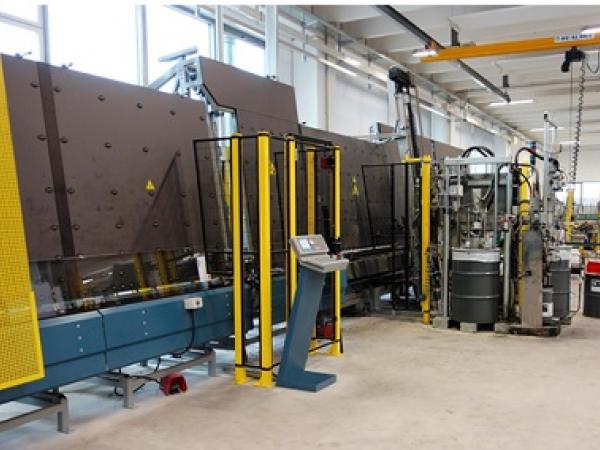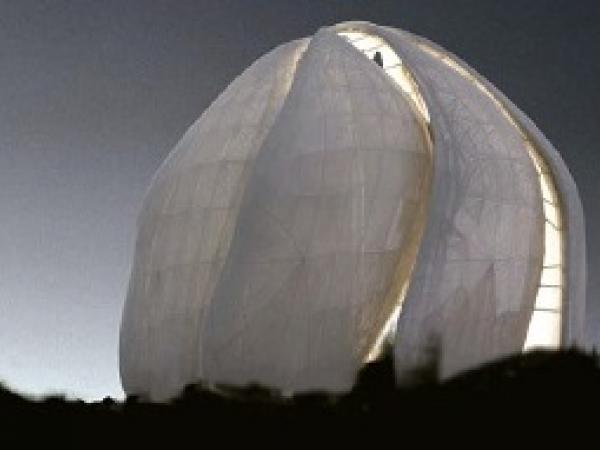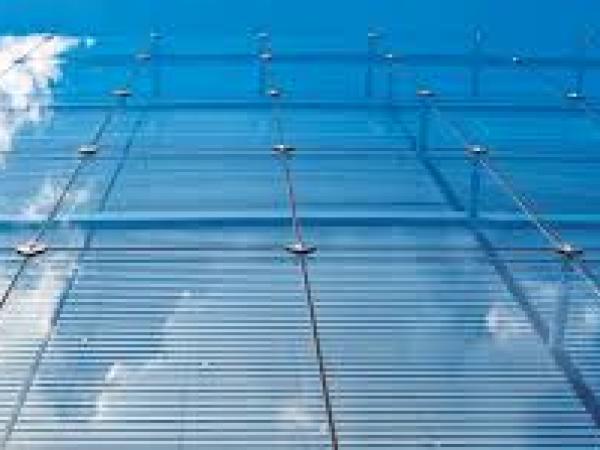Others also read
| Fondation Louis Vuitton deploys SentryGlas® ionoplast interlayer – part of the Trosifol Structural & Security Product Portfolio – and Dow Silicone to fl oat like a sailboat above the treeline of the Bois de Boulogne in Paris
| In recent years the growing energy costs and the imposition of increasingly stringent limits to the gaseous emissions into the atmosphere have put a strong pressure on the glassmaking industry to research new solutions to improve the efficiency and ecological sustainability.
| FINSTRAL is a company group with its headquarters in Bolzano (IT) and occupies a successful niche in developing high quality doors and windows, as well as glass fittings.
| The visually stunning cable-stayed glass facade that surrounds the recently-opened Enzo Ferrari Museum in Modena, Italy, is another outstanding demonstration of the qualities and capabilities of SentryGlas® ionoplast interlayer.
| Over half the world’s seven billion inhabitants live in cities, by the year 2050 the number will grow to almost ten billion. In order to avoid a climatic collapse in the metropolises, there is no other alternative to energy-efficient buildings.
| Cities are eating up an increasing amount of heat and electricity. In order to reduce this consumption, buildings have to become increasingly efficient and integrate more renewable energies.
| The crisis of the photovoltaic industry is drawing to a close. While it is true demand for solar modules is dropping in Europe, demand in many other regions is rising rapidly.
| Finding ways to improve energy efficiency is one of the greatest challenges facing contemporary architecture.
| Although the costs for solar power have come down considerably lately, photovoltaics are still unable to compete with conventional energy sources.
| Resilient, ultraslippery glass could lead to self-cleaning, scratch-resistant windows, lenses, and solar panels
| Differently from traditional structural materials, the structural behaviour of laminated glasses exhibits some anomalies due to the difference in the stressstrain laws of their components: glass is a brittle material, while PVB and SGP are thermoplastic materials with a visco-elastic behaviour.
| Laminated glasses consist of two or more glass sheets bonded together with plastic interlayers. The lamination gives to LGs a safer behaviour than monolithic glasses, avoiding injuries to people in case of breakage.
| Melting glass is a very energy intensive process, with process temperatures of more than 1600°C required to melt the raw materials in the furnace.
| This abstract focuses on the idea of establishing an explicit informational level between aesthetic design idea and know-how of façade designing techniques and fabrications.
| A glittering facade of suspended glass blocks veils Hiroshi Nakamura’s winning entry to the ar+d Awards for Emerging Architecture
| i.lab - Innovation and Technology Central LaboratoryBergamo, Italy - The Plan 060, Settembre 2012Richard Meier & Partners Architects
| Transparent glass facades dominate much contemporary high– to mid–rise urban residential architecture. This article takes a closer look at life behind glass facades in contemporary surveillance culture.
| The architectural façade has long been a compelling focus of interest for building scientists and designers alike, combining attributes of both appearance and performance in a manner unlike any other building system.
| Case Studies in Optimization of Glass-panelized Architectural Freeform Designs for the Eiffel Tower Pavilions
| Approaching the built environment from the point of view of phenomenal light allows James Carpenter to consider the luminous qualities of glass and other materials and the experiential qualities of light as a primary concern of architectural design.
| The following approach describes a new encapsulation technology for glass-glass-modules using tempered thin glass as front and back sheets.
| Was Fukushima like Chernobyl? There are those who say yes, and those who lean toward no. That is, from a purely technical point of view. But, in the eyes of the media, or of people’s awareness in general, the difference is huge.
| SSV tested thousands of glass panes from 2000 according to the European Standards for thermally toughened safety glass EN 12150 and according to EN 1863 for heat strengthened glass.
| “Casa Zero” produces more energy than it actually needs, creating a permanent cycle.
| Office building achieves Breeam "Outstanding" rating / 16,500 sqm ipasol neutral for effective solar control
























